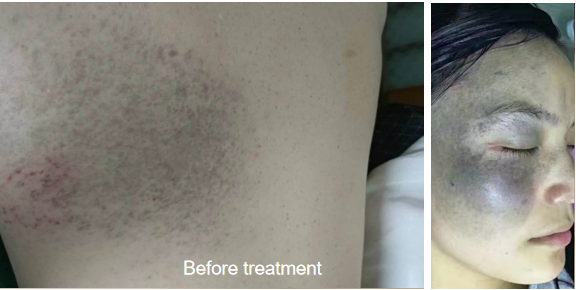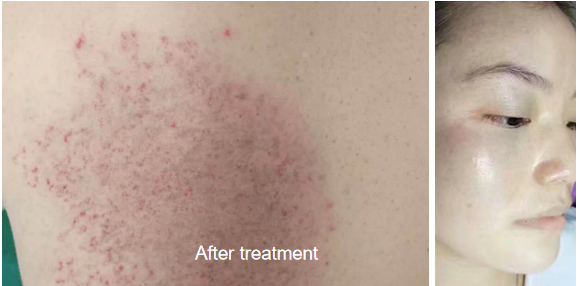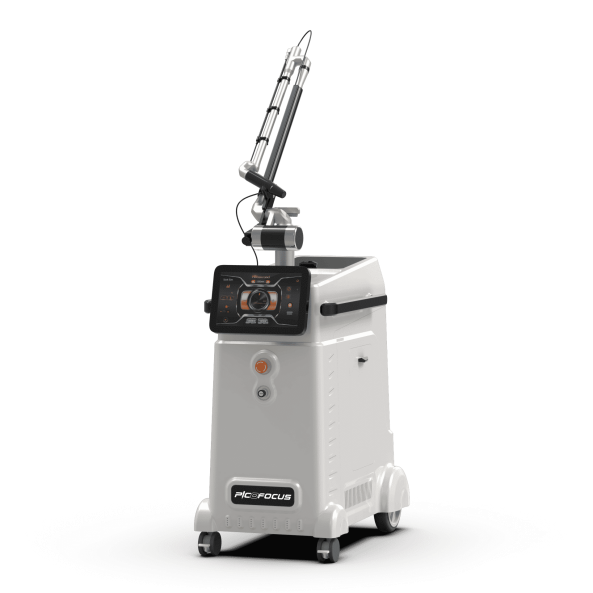Picosecond Laser: Is One Treatment Really Enough? Expert Insight

1. Revolutionary Breakthroughs in Picosecond Laser Technology
The birth of Pico Laser technology marks a significant technological leap in the field of cosmetic medicine. Its revolutionary breakthrough is mainly reflected in compressing the laser pulse time to the trillionth of a second level, which is over a thousand times faster than traditional nanosecond lasers. This breakthrough compression in the time dimension has completely changed the interaction mechanism between lasers and biological tissues.
1.1 Photomechanical Effect: A Groundbreaking Working Principle
Picosecond laser generates powerful photoacoustic waves in a very short period of time through high-energy pulses. This new type of optomechanical effect can accurately crush pigment particles into nanoscale (<100nm) fine particles. The crushed pigments are naturally metabolized and cleared through the lymphatic system, while laser energy can stimulate the regeneration of collagen and elastin fibers in the dermis, thereby achieving the dual therapeutic goals of “pigment clearance+skin reconstruction” simultaneously. Clinical data shows that this technology can increase the pigment clearance rate to over 92%, while the collagen proliferation effect is 40% higher than traditional lasers.
1.2 Multi-Wavelength Targeted Therapy System
The core advantage of the multi wavelength layered targeted therapy system picosecond laser lies in its intelligent wavelength selection system:
- 532nm wavelength: dedicated to epidermal pigmentation lesions (freckles, sunspots, etc.), with a treatment accuracy of 0.1mm
- 755nm wavelength: can penetrate to the superficial and middle layers of the dermis, effectively improving refractory pigments such as melasma and coffee spots
- 1064nm wavelength: directly reaches the deep layers of the dermis, specifically targeting stubborn pigments such as Ota nevi and tattoo ink
2. The Truth About Single-Session Treatment: Immediate Effects and Scientific Limitations
2.1 Immediate Effects of Single-Session Treatment
The immediate effect of a single treatment is usually observed in patients with skin brightening and a 20% -40% reduction in surface pigmentation immediately after the first treatment. Shallow sunspots may significantly fade, and pore texture may also slightly shrink.
2.2 Scientific Limitations of Single-Session Treatment
The pigments in the skin have an onion like layered structure, and a single treatment can only act on the current active layer. Deep dormant pigments require multiple activations to be cleared layer by layer. More importantly, the regeneration cycle of melanocytes in hair follicles is about 28 days, and a single pulse cannot cover all stages of cell growth, leading to pigment regeneration. The biological laws of collagen remodeling further limit the single effect, and the improvement of structural damage (such as acne scars and wrinkles) relies on continuous stimulation. Although a single treatment can initiate repair signals, the newly formed collagen takes 2-4 weeks to gradually mature.
2.3 Actual Clinical Needs for Treatment
For dermal melasma or deep acne scars, it is difficult for a single energy to penetrate to the depth of the target tissue. Clinical data shows that the average duration of a single treatment is only 3 months, and 90% of deep pigmentation problems require at least 3 treatments to achieve fundamental improvement.
3. Three Key Determinants of Treatment Session Requirements
3.1 Pigmentation Type and Depth Variations
Superficial freckles or sunspots may be cleared by 80% within 1-3 treatments, while mixed melasma requires 4-6 treatments and oral administration of tranexamic acid to suppress recurrence mechanisms due to vascular reactions and hormonal fluctuations. Ota nevi or professional tattoos on the dermis require 6-8 or more impacts – the deep pigment metabolism rate is only one-third of that of the epidermis, and green ink requires 755nm+1064nm dual wavelength alternating treatment due to its stable molecular structure.
3.2 The Critical Role of Individual Physiological Factors
The metabolic efficiency of young and healthy skin can reduce the number of treatments by 20%, but patients with liver and kidney dysfunction need to increase their low-energy adjuvant therapy by 2-3 times due to a decrease in melanin metabolism enzyme activity. The fluctuation of androgens in individuals with polycystic ovary syndrome is prone to induce color fading and recurrence, requiring a 30% increase in treatment frequency. For individuals with a tendency to develop anti melanoma constitution, the interval should be extended to 6 weeks and preoperative combined with glutathione introduction to enhance cellular antioxidant capacity.
3.3 Enhanced Efficacy Through Device and Technology Selection
The Picosecond device using 755nm gold wavelength has a 50% increase in affinity for melanin and a 30% higher freckle removal efficiency than ordinary devices. Focusing lens technology concentrates energy into microbeams, which can form a “collagen induced zone” in the dermis layer in a single operation, increasing the improvement rate of acne scars by 50%. But precise control of energy density is required – exceeding 8J/cm²may cause blisters, while below 4J/cm², it is difficult to activate collagen regeneration.


4. Golden Strategies for Scientific Treatment Protocol Design
4.1 Stratified Progressive Therapy for Pigmentary Disorders
Mild pigmentation adopts a two-stage strategy of “explosion inhibition”: initially focusing on dominant pigment decomposition, and later turning to melanin pathway regulation. Stubborn pigmentation requires a combination of wavelength intervention – deep anti-inflammatory and surface fading are implemented in stages. Skin tone reconstruction requires the use of tyrosinase inhibitors to block the new pigmentation pathway.
4.2 Collagen Activation Protocols for Structural Skin Damage
Depressive scars require multiple stimulations to activate fibroblasts, with each treatment interval meeting the collagen maturation cycle. Recommended energy synergy solution for static wrinkles: laser microchannels complement deep thermal effects to activate fibroblast proliferation.
4.3 Persistent Eradication Strategies for Tattoo Removal
Amateur tattoo pigments have lower stability, while professional color pigments (especially blue-green series) require alternating use of complementary wavelengths for continuous decomposition due to their complex molecular structure. The number of treatments is directly related to the chemical stability of pigments.
5. Comparison and Applicability of Mainstream Picosecond Devices
| Device Model | Country of Origin | Core Technical Features | Primary Indications | Recommended Treatment Sessions |
| PicoWay | USA | Holographic Focusing Technology, Dual Wavelength (532/1064nm) | Stubborn Pigmentation, Tattoos | 3-5 sessions |
| Discovery PICO | Italy | Square Spot Technology, 1064nm Deep Penetration | Deep Pigmentation, Atrophic Scars | 4-6 sessions |
| PicoSure | USA | Focus Lens Array, 755nm Wavelength | Skin Rejuvenation, Fine Lines, Superficial Pigmentation | 3-5 sessions |
| PicoFocus | China | Short Pulse Width, Various Wavelengths(1064nm 532nm Standard;585nm,650nm,755nm Optional), High Peak Power | Versatile Treatments, Skin Rejuvenation, Acne Scar Removal, Skin Whitening | 3-5 sessions |
| PicoPlus | South Korea | HEXA Multi-Focus Lens, Multi-Wavelength | Comprehensive Treatment, Enlarged Pores | 4-6 sessions |
| PicoCare | South Korea | Honeycomb Focusing Lens | Pigmentation, Vascular Lesions | 3-5 sessions |
6. Maximizing the Efficacy of Single-Session Treatment
6.1 Critical Measures During the Golden Recovery Period
72 hours after surgery is the window for barrier repair: use medical cold compress containing epidermal growth factor (EGF) for continuous sedation, avoiding mechanical friction and high temperature environment. Sunscreen implementation must be absolute – UV radiation can increase the risk of recurrence by 300%. It is necessary to apply SPF 50+ PA++++ physical sunscreen daily and use UPF50+sunscreen umbrella for physical coverage.
6.2 Prevention and Control System for Post-Inflammatory Hyperpigmentation
High risk individuals need to take oral vitamin C and glutathione 2 weeks before surgery to enhance intracellular antioxidant reserves. The intraoperative energy density is controlled at a safe threshold. In case of anti blackening, immediately use 5% tranexamic acid essence to block tyrosinase activity, and switch to non stripping dot matrix laser for repair treatment.
6.3 Principles of Skin Barrier Function Reconstruction
Fourteen days after surgery, a repair cream containing ceramide III, cholesterol, and free fatty acids was used to reconstruct the lipid bilayer. Prohibit any acidic products until skin tolerance testing is restored (usually taking 28 days).
ABOUT Nubway
Reliable Beauty Equipment Supplier
Nubway has been established since 2012 and located in Shunyi District, Beijing, China. We integrated R&D, production, sales and training services for a highly efficient and optimal manufacturing corporation.
50+ R&D engineers
30000mf+ large factory
20+ after-sales engineers
10+ years trade export experience
Exported to more than 120 countries





